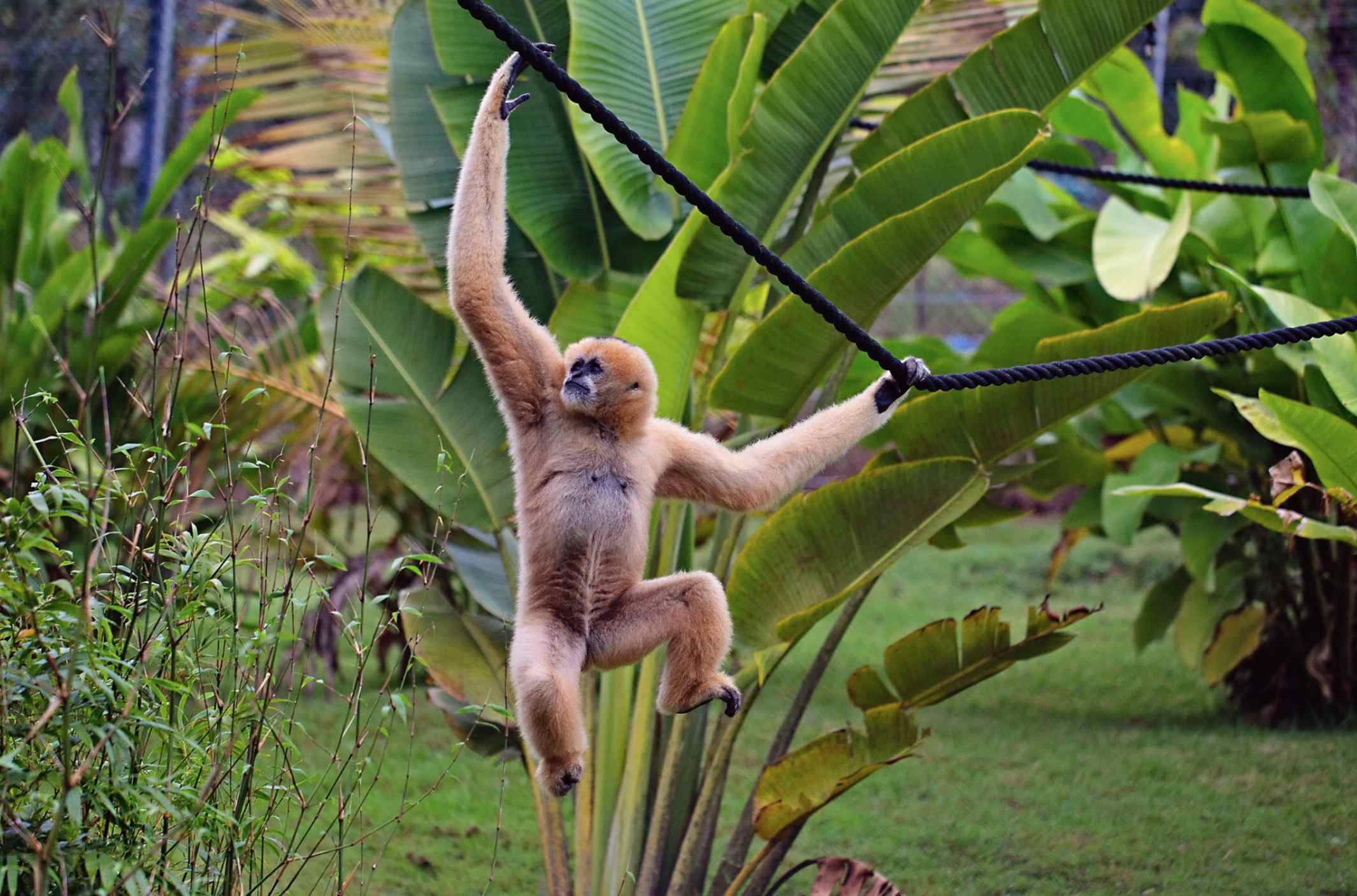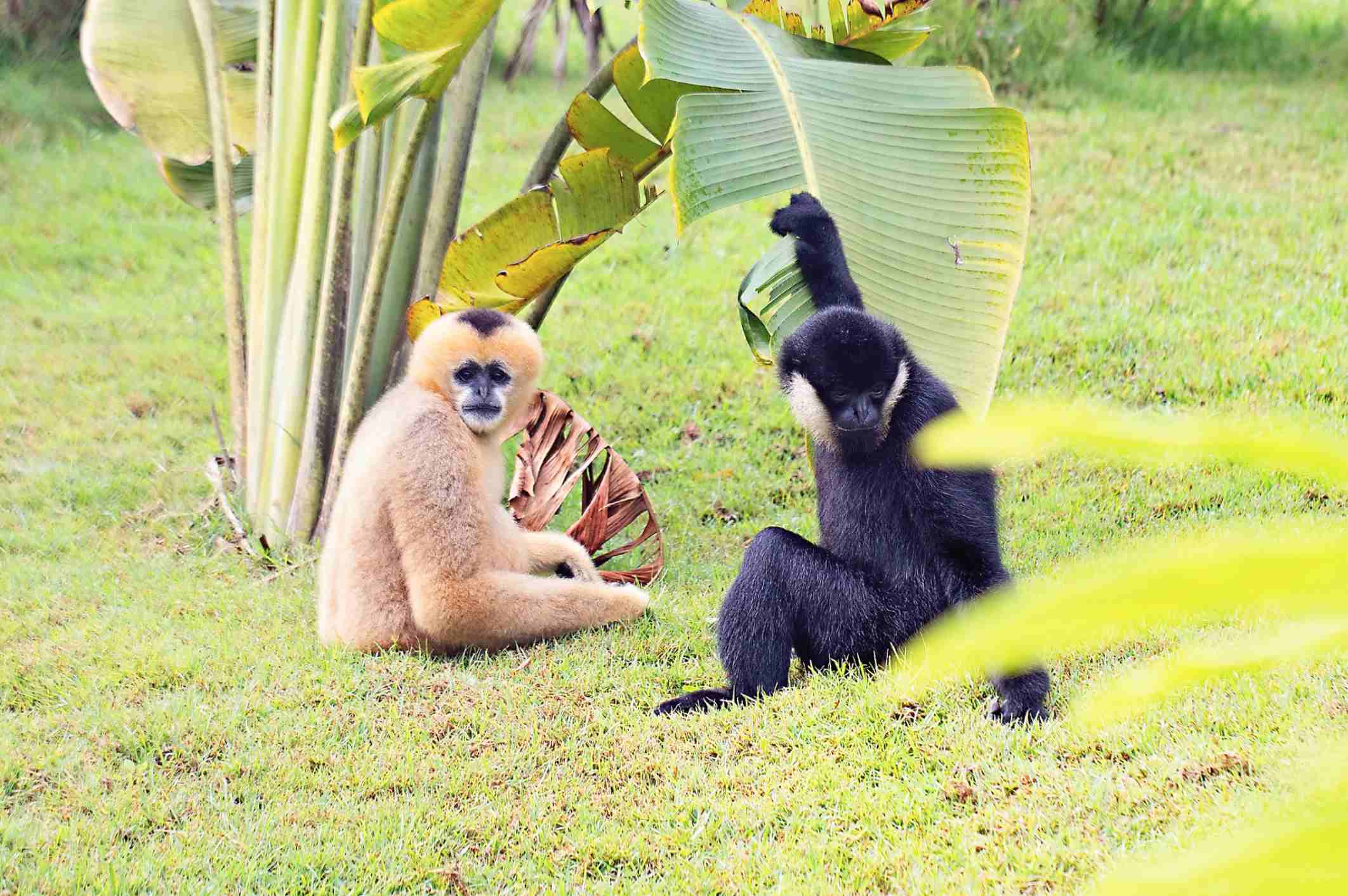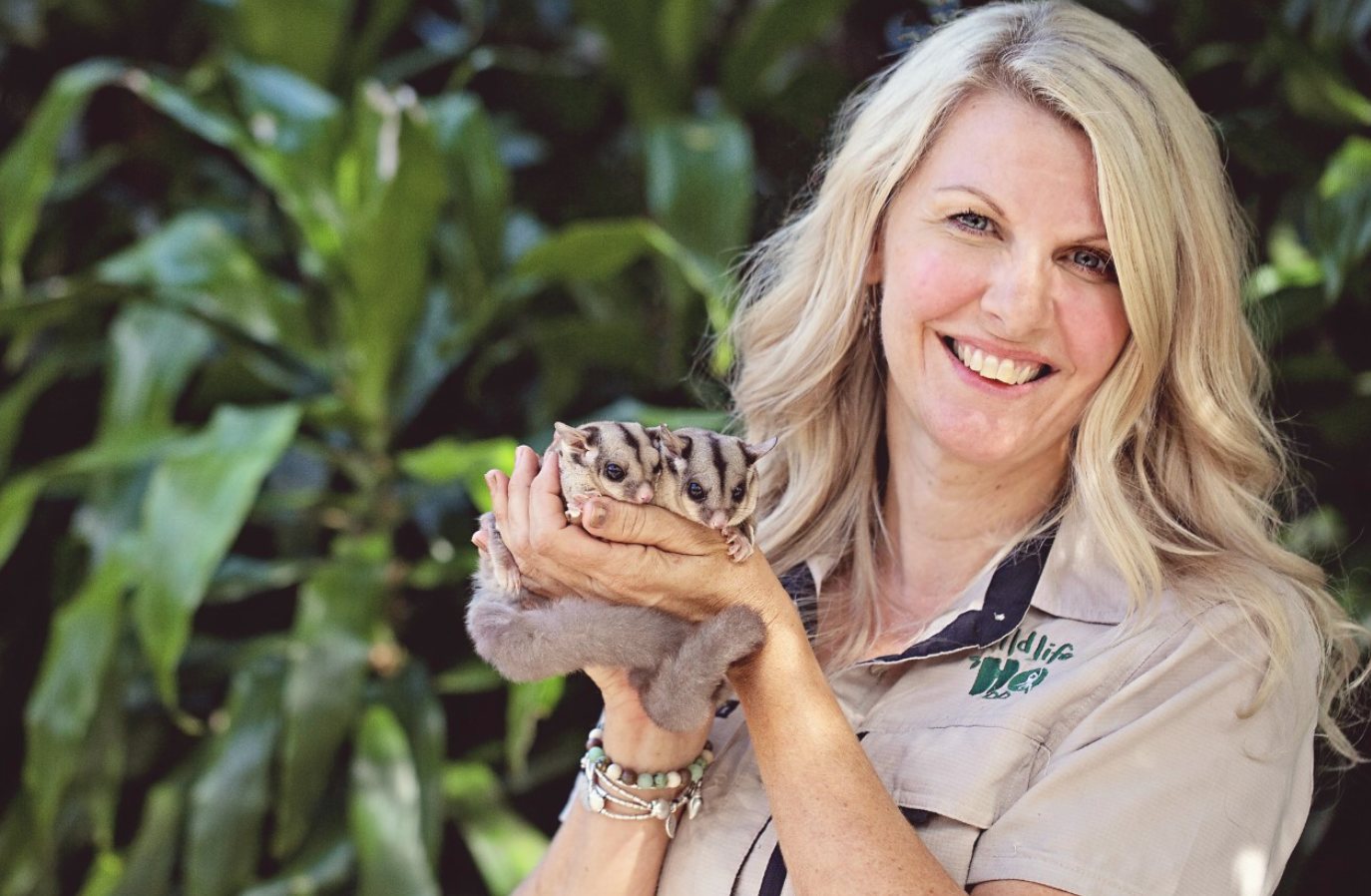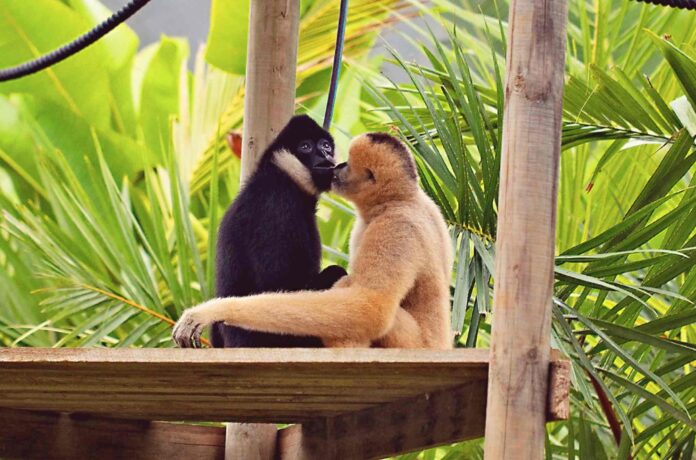Love is in the air at Wildlife HQ, where two white-cheeked gibbons have been gushing over each other since they moved in a couple of months ago.
Tao and Tien have delighted with their agility, their antics and, perhaps most importantly, their affection for one another.
It’s hoped they will breed soon, which would be a crucial moment for their critically endangered species. There are today less than 150 of their kind in the wild.
Wildlife HQ zookeeper Sue Tonga said the pair were smitten with each other.
“We’ve actually seen them kissing. They’re just adorable when they’re cuddled up,” she said.
“They sit together a lot. Tao really adores Tien and will often groom her back.”
It’s obvious who is boss.
“Tien is quite sassy,” Sue said. “But they’re a really sweet pair and they like to hang out together.”

It’s hoped Tao, 20, and Tien, 8, will breed soon and successfully raise young.
“We’re hopeful she will fall pregnant soon – she could fall pregnant any time now,” Sue said
“If there is a strong bond, there shouldn’t be any problems.
“Tao has been a father before, which will help. It would be Tien’s First time as a mum so it will be a matter of seeing how she goes with the baby.”
Gibbons usually have one baby, before waiting a couple of years before breeding again.
Babies usually stay with their parents until they are 5 to 7 years old, before the mother decides to cut ties. Gibbons can live until they’re about 45.
Sue said it was vital that Tao and Tien breed in captivity.
“There are less than 150 gibbons in the wild (mostly in Vietnam and Laos),” she said.
“That’s mostly because of habitat loss, due to logging. A lot of land gets used for palm oil.
“They are also taken as pets as well. People often shoot the adults and take their babies, and there is a lot of trafficking of gibbons.
“So, their (Tao and Tien’s) genetics are important for the population.
“It’s really important for zoos to continue to breed gibbons because they create an insurance population.”

The pair’s ‘romance’ started at Perth Zoo.
“Tien was paired up with another male originally, but they didn’t like each other,” Sue said.
“Gibbons must want to be together.
“Tao had encephalitis and it took him two years to recover. He had a brain injury and he had been pulled away from his family (because of that).
“So, then they tried to give Tao a chance with Tien, and she took an instant liking to him.
“Perth Zoo said it was the strongest bond they’ve ever seen.”

The couple was then relocated to Wildlife HQ in early August.
“We were expecting to get gibbons three years ago but then COVID hit, and the plans changed,” Sue explained.
“We couldn’t get the female we had wanted from France, so we had to re-look at it.
“We went through all the options in Australia, and we worked out that Tao and Tien were well suited to come to Wildlife HQ.”
They’ve settled in extremely well.
“They’ve been perfect and are probably the easiest animals we’ve had to settle in,” Sue said.
“They learned their habitat and everything we need them to do, in terms of recalling them.”
Their habitat is almost as impressive as they are. It features a sky-high poinciana tree, gardens, open space, running creek and pond.
“They spend equal time in their bog tree and lounging around the pool – they seem to love the pond.”
The gibbons have showcased their amazing agility and grace in the tree, swinging from limb to limb and across ropes.

“It’s an incredible mode of moving,” Sue said.
“It’s called brachiation, so it’s hand over hand. They travel at incredible speeds, and they do it so effortlessly.”
But they’re not as stylish on land, walking with a clownish gait that includes throwing their hands in the air.
“They’re quite comical,” Sue said. “They’ve got these incredibly long arms and they kind of don’t know what to do with them when they’re walking.”
“Tao actually does a few little twirls when he walks. That’s not even a gibbon thing, that’s just his style.”
Gibbons are easily identifiable – male gibbons are mostly black, while females are mostly beige. They’re about 4.5kg and 46cm. They eat plants and fruits in the wild but at Wildlife HQ they have a steady diet of vegetables, with some nuts, seeds and a small amount of fruit.
Meanwhile, Wildlife HQ is a finalist for the Sunshine Coast Business Awards. The zoo survived and then thrived, after a relocation from the former Alma Park Zoo in Brisbane. Keep an on eye on Sunshine Coast News for more.
SUBSCRIBE here now for our FREE news feed, direct to your inbox daily!





